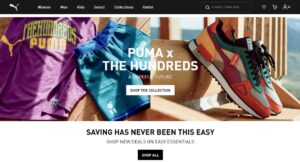Imagine trying to play darts. Imagine trying to score that bullseye, but with a rubber duck!
And that’s exactly how it is when a marketing campaign runs without paying any attention to the UX, or vice versa. Currently, we are living in a landscape where everything is interconnected. And in this world of the butterfly effect, the connection between UX and digital marketing has become more important than ever.
The key to surmising the impact of these two upon each other is to know the connection first. How can these two seemingly unrelated aspects of a business not only be related but have a greater impact on the success of the business?
UX And Marketing: A Unique Yet Obvious Relationship
The first step to understanding the relationship between these two business aspects is to understand the individual concepts at first.
So let’s straighten out the concepts.
- User Experience: A Breakdown
UX, aka user experience, is self-explanatory in its name. It is the overall experience a user has with a product or a site. The feelings and sentiments can range from absolute delight to horrid disgust.
The UX is not just about how a site is designed, but the various channels that permit the users to interact with the organization. Let’s look at an example of this, shall we?
Consider one of the popular brands, such as Puma. The sports apparel brand is quite popular and has its own fan following. However, what enriches the UX of their products?
It’s not just the quality of the products. It is also the site UX and content strategy, the support channel, and the overall feeling it creates among the users with the brand.
Source: https://us.puma.com/en/us/home
And that’s UX! The entirety of the services, from the site to the support channel, from the product to maintenance, everything about the business is going to build up the experience of the users.
Now let’s see what marketing entails.
- Marketing: More Than Just Selling Products
The definition of marketing, according to the American Marketing Association reads something like this-
“Marketing is the activity, set of institutions, and processes for creating, communicating, delivering, and exchanging offerings that have value for customers, clients, partners, and society at large. (Approved 2017)”
The definition breaks any stereotypical assumptions about marketing practices better than anything else. So far marketing (digital or otherwise) has been considered to be a process to increase sales and generate more revenue. But at its core, marketing is more than that.
Marketing is a process that facilitates a conversation between the patrons, (both existing and prospective) and the organization. This discussion tries to engage the consumers with the brand, applying various elements of marketing and conversion techniques along the way to secure consumer loyalty.
This process requires a lot of examination, both into the consumer demographic and the marketplace scenario. The information gathered from this study is compiled to create strategies that will connect the right audience with the right product and help with the pain points. Needless to say, UX happens to be an incredibly important part of this ‘helping with the pain point’ step.
The Relationship Dynamic: Why Do They Connect?
On one hand we have UX that is all about how a user discerns the entire product. And one the other we have marketing that is all about finding (attracting) the right people and offering them the product they might find useful and relevant in day to day life.
The relationship between the two is similar to give and take dynamic. A properly built UX needs marketing to be discovered and thrive in the market. And a marketing campaign needs robust UX to become successful rather than a complete hoax.
The proper execution of marketing and UX design fulfills a certain vacuum for both. Directly or indirectly, these aspects help each other to attain the individual and shared goals. And here is a detailed investigation on how marketing and UX assist each other in various ways.
All The Things Marketing Does For UX: A Rundown
There was once a saying “build well, and they will come!”, and this saying worked, for a long time. However, now it is considered to be an outdated concept.
We are living in an age of noise, where the numerous online channels are pestering the users with hundreds and thousands (if not more) of advertisements on every possible product, services, and solutions. And in this cacophony of promotion, users are having a bit of a hard time finding the right products for them.
So even if the product or the site has a robust UX, it is not going to be able to penetrate the wall of chaos, without the right kind of marketing help.
Let’s take a moment and look at exactly how the right kind of product design marketing assists the UX to reach out to the consumers out there.
They Share A Common Goal
Marketing and UX design efforts, both share a common goal, and that is to understand the users and deliver the right services to the right people at the right time. In this common practice of understanding the user demographic, marketing practices support the UX operations with an in-depth insight into what the people expect from a similar product.
There may be discrepancies separating the two types of research. But at the end of the day, with the aid of both market and UX study, experienced web design agencies in cities like New York can get a consolidated idea of user expectations and the reaction to the existing products in the market.
UX Marketing To Engage The Users
The first thing patrons have to do to judge the UX is to interact with the brand. And that’s where marketing practice steps in.
The various iterations of marketing aim to capture audience attention, engage with valuable information, and convert them into loyal consumers. If the UX marketing approaches are good and have proper value, the users would be more interested in checking out the ultimate service. And, if the methods used to get audience attention are manipulative, the experience will be sourced from the very beginning.
It Communicates The Value Of UX
Continuing from the previous point, the marketing techniques in use affect the overall UX as well. The employment of overly manipulative or forced marketing techniques can become a major issue when trying to engage the audience.
Good marketing techniques elevate the value of simplistic and aesthetically pleasing design and establish it as an essential product to have for the consumers. These techniques also include the site content as well. The content serves a purpose to engage users ethically and enhance the overall experience of the consumers.
Marketing Keeps UX Relevant
While trying to reach out to the audience out there, marketing practices keep a close watch on the industry landscape. And the information gathered from this observation helps the UX of the product stay relevant to the shifting demands.
Based on the changing market landscape, the organization can give the UX a makeover through a website redesign to stay relevant over time. This serves to enhance the UX matters as well as benefits marketing practices.
How UX Helps Marketing: An Overview
The impact of UX in digital marketing is undeniable. When the UX is good, the smallest of marketing efforts will result in better outcomes.
So let’s look at some specific ways UX supports the marketing efforts and reach out to a wider audience.
Good UX Helps Build A Brand
There are both negative and positives of marketing and UX magnifies the positive side of the marketing practices.
Quality UX on a product or a website is a significant ingredient to build up a brand image for the organizations. And that brand image is the nucleus around which the marketing practices revolve. Building a reputation is where marketing and UX design really come together to make the product/service successful.
Helps Campaigns Establish Value
Every marketing campaign aims to establish the product as a leading and valuable solution in the market. However, without good UX to back it up, the established value soon becomes empty promises.
Consider the hype around Google Wave. The platform merged the abilities of email, personal messages, and document collaboration. It was considered to be “what email would’ve looked like if it was developed in modern times.”
Boasting of its multiple functionalities, Google wave started its journey around 2010. But, its adventure ended in 2 years, and now and eventually faded away from human memory. All because of one thing, and that is the UX.
The platform lacked simplicity and overwhelmed the users. Such a UX failed to back up the marketing pitch that promised a better customer experience compared to the rivals. This discord proved to be the ultimate end of the product. A robust UX provides a backbone to the marketing pitch that tries to establish the product value to the audience.
Helps To Engage Brand Advocates
Brand endorsers are the ones who can hype up a certain product on various platforms. Fellows out there already love to check the reviews and testimonials before acquiring a product. And having the product recommended by popular faces will elevate the public interest.
However, getting supporters is not an effortless task. Promoters want to know if the service is worthy of being endorsed. And the right product design marketing improves the chances of impressing them. Proper experience building can make the task of getting endorsements and fortify success easier than ever.
Helps Fulfill Marketing Goals
Previously we addressed the matter of how marketing and UX strive to fulfill the same mission, and how marketing helps UX to accomplish the goal. Now, let’s look at it from the UX point of view.
We all know that marketing goals mainly revolve around bringing in the consumers for a discussion and then convert them. With that context in mind, consider the UX of a website-
The visual communication design on a website is crucial for conversion. Whatever texts, images, and CTAs are on their makes all the difference. In such a scenario, utilizing marketing techniques to attract visitants to the site is not enough. In order to convince the visitors, the site needs a robust UX.
The texts should be subtle yet impactful, the options and CTAs easy to find and engage with, and the overall vibe of the site friendly and comforting. Depending on the industry this emphasis on amiability and comfort may change, but the main aim here stays the same.
UX is considered to be one of the main components to increase user transformation for any product. And that is exactly how it helps to fulfill one of the major marketing goals.
UX & Marketing: The Unlikely Heralders Of Success
Despite being at odds with each other, the perfect blend of these can help to bring exponential progress. High-quality UX and emphatic marketing that focuses on presenting relevant commodities to the users adds an edge to the service, website, or product. So go ahead and check in on the UX and digital marketing campaigns, and recalibrate for absolute success.




